June 2020 Vol. 75 No. 6
Features
22nd Annual Directional Drilling Survey
By Robert Carpenter, Editor-in-Chief
For the horizontal directional drilling (HDD) industry, these are indeed interesting times. While many contractors still thrive in their market segments, others struggle mightily.
The sudden drop of oil and gas consumption worldwide, by as much as 30 percent, combined with a price war between Russia and Saudi Arabia sent oil prices spiraling downward into negative territory. While quickly climbing back up into positive territory and continuing a steady recovery, at press time, oil prices have only now started flirting with a price point that could make drilling – and pipeline construction – justifiably profitable again. It remains to be seen how long it will be before pipeline projects can resume.
On the other hand, many in the large rig market have been successful at acquiring projects unrelated to pipelines. For a Southwest contractor, “We learned years ago – even during the pipeline boom – that we should diversify. About half our projects involve water, electric – even fiber – that require a big rig for the job.
“We’re certainly hurting from our oil and gas work dropping off,” the contractor continued. “but we have enough work to survive. That’s why we worked so hard to get into other markets.”
Homebound
For small-to-medium rig owners and operators, the telecommunications industry, i.e. broadband, has only experienced minor hiccups in work output during the height of the coronavirus pandemic. The build-out of 5G cell networks had slight slowdowns in certain parts of the North American markets, but fiber construction overall rarely blinked an eye.
As many Americans have been forced to work from home since mid-March, broadband has never seen such high usage rates. Demand for internet and streaming services have soared. Initial projections from industry sources are that the work-from-home trend – which, as a whole, has worked quite well across the U.S. during the pandemic – will continue as things return to some semblance of normalcy.
Streaming entertainment services also have seen a major boost in consumer demand. The “new normal” will definitely include even more demand for broadband services; that means a steady dose of fiber buildouts to homes, business, medical facilities, etc.
Modern communications made possible by broadband had already unveiled a wealth of options and opportunities to the average consumer. With the coronavirus pandemic, the lid on that box swung wide open, unleashing demand for fiber opportunities not only among businesses and the medical sector, but a renewed push for home services,
as well.
Thus, the overall buildout of communications services never seriously slowed during the pandemic, to-date, so telecom contractors, principally using HDD, rarely saw an interruption in their workloads. That trend should continue for the foreseeable future.
“We’ve been doing as much updates and replacement work as new installations,” reported a Midwest contractor. “Typically, we use HDD for new construction. While we’re still doing that, with so many people working from home, we’ve been helping out the telecoms with maintenance and service upgrades.”
Added a West Coast contractor, “The telecoms we work for are already talking about the increased need for fiber-to-the-home services by 2021.”
For the past several years, medium-sized rigs have been a hot commodity. Survey respondents say that while some of their work for pipelines has dried up for the time being, they are still able to utilize those rigs for multiple applications.
“We bought a 60,000-pound [pullback force] rig a couple of years ago and use it for a variety of needs and applications,” revealed a Southeast contractor. “We expect to keep that rig pretty busy through the year. The water market keeps growing, and for a lot of our distribution and telecom projects, we sometimes need the extra power.”
Broad applications
Indeed, the current pandemic has clearly demonstrated just how valuable HDD has become to the underground construction industry. HDD has been embraced broadly by virtually every market involved in underground utility installations. Telecom remains the primary driver for small rigs, while gas distribution, electric, water and even sewer continue to emerge as growing market opportunities.
In this year of the pandemic, HDD market composition has changed somewhat. The survey revealed that at 25.9 percent, telecom still represents the largest market segment for HDD applications. However, water is maintaining a 19.9 market share, followed closely by gas distribution at 19.8 percent and electric distribution/transmission at 12.9 percent.
At the time this survey was conducted, oil and gas transmission applications had fallen to 7.6 percent of the market (and were still falling). Varied and innovative uses of HDD have grown to a 3.1 percent market share.
When asked about future prospects for the continued growth of HDD, most respondents strongly agreed the technology has a bright future. Observed a Mountain States contractor, “In the short term, as long as things like fiber and 5G hold up, HDD has a great future. The key will be keeping HDD expanding in different markets, like water and sewer and other areas, so that when telecom finally slows down, we’ve still got plenty to do.”
Several respondents mentioned the state of the economy in light of the pandemic as a major concern. “We really need to get the economy going pretty quickly to keep our work growing,” said a Mid-Atlantic contractor. Another concern emphasized by a Southeast respondent, as well as by several other contractors, is that “the presidential election could have a major effect on construction.”
In 2019, about 34 percent of contractors executed up to $1 million of HDD work, 44 percent performed $1 to $5 million, 13 percent had HDD work worth between $5 and $10 million, and 9 percent completed projects in excess of $10 million.
Rookies, other issues
Contractors have complained for several years about new contractors jumping into HDD without experience, then underpricing and underperforming on jobs.
“These rookies usually have very little training – or haven’t taken the time to get trained – on best practices and profitability,” observed a Midwest contractor.
Said this Southwest contractor, “Some of these new guys don’t only leave a lot on the table [bid pricing], but they are not up-to-speed on safe practices. Cross bores are enough of a problem without these new guys poking holes everywhere.”
Disposal of drilling fluid remains a major issue for many contractors and was again referenced frequently in the survey comments. “It really drives up the cost of a job,” said a West Coast contractor.
“It seems like states are listening more to environmentalists than to the facts about mud and how we treat it,” complained a contractor from the Southeast.
Mud/fluids mixing, cleaning, recycling and reclaiming equipment continue to gain an essential role on all sizes of projects. This is a direct response to more diverse and intense demands from contractors, as their mud disposal challenges are only becoming greater.
The average age of a contractor’s HDD rig fleet increased a little in 2019. The percent of rigs 10 years or older was 13.7 percent, compared to 13.2 percent in 2018. About 26 percent of rigs are five to 10 years old, 34.6 percent are two to five years old, and 25.9 percent of all rigs in use today were purchased within the past two years.
Used rigs remain a major factor for contractors, especially those needing to augment their existing fleets, and for new contractor entrants into the market. For 2020, 66 percent of the respondents have bought used units at one time or another. About 55 percent of used rig purchases are anticipated to be in the smaller rig market rigs (under 40,000 pounds of pullback force).
Original equipment manufacturers (OEMs) in the HDD tooling and drill pipe sectors play a vital role with many contractors. About 43.5 percent of downhole tooling is purchased from OEMs and 48.3 percent of drill pipe.
The survey also asked about the most important qualities contractors seek from their manufacturer and supplier partners. As it has been for several years, “service” is the most coveted attribute and was cited by 44.1 percent of respondents, followed by “quality” at 30.9 percent.
The most common pipe installed via HDD remains HDPE, with a 49-percent market share, while PVC continues to be strongly entrenched in second place at 26.3 percent. •



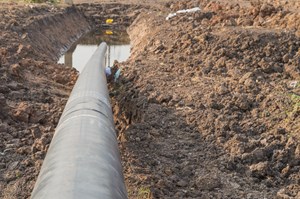
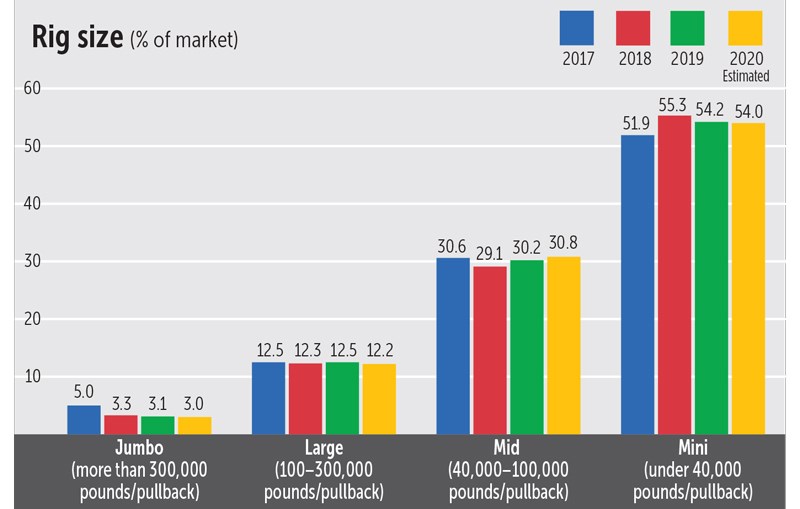
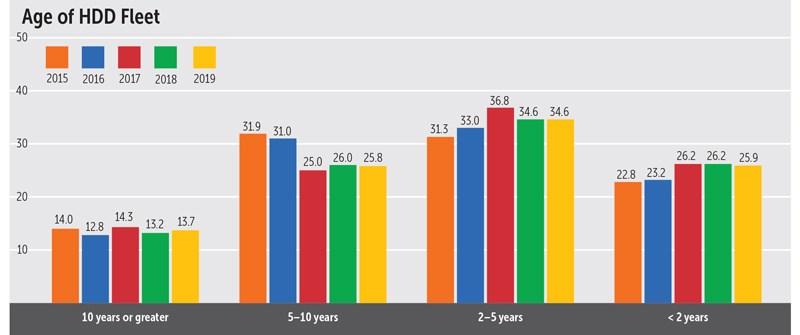
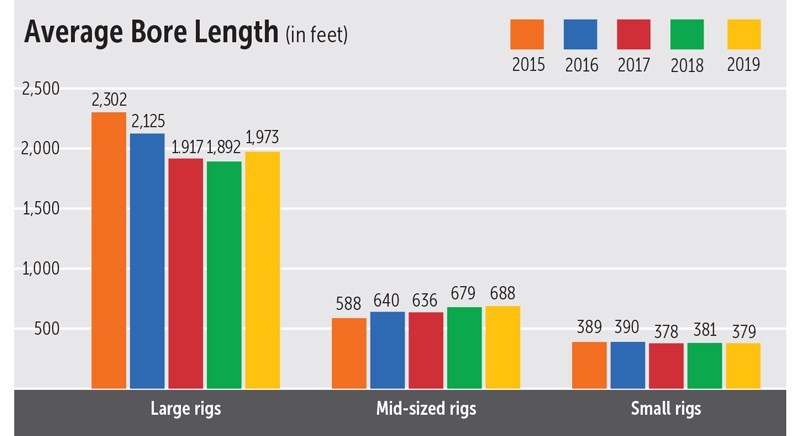
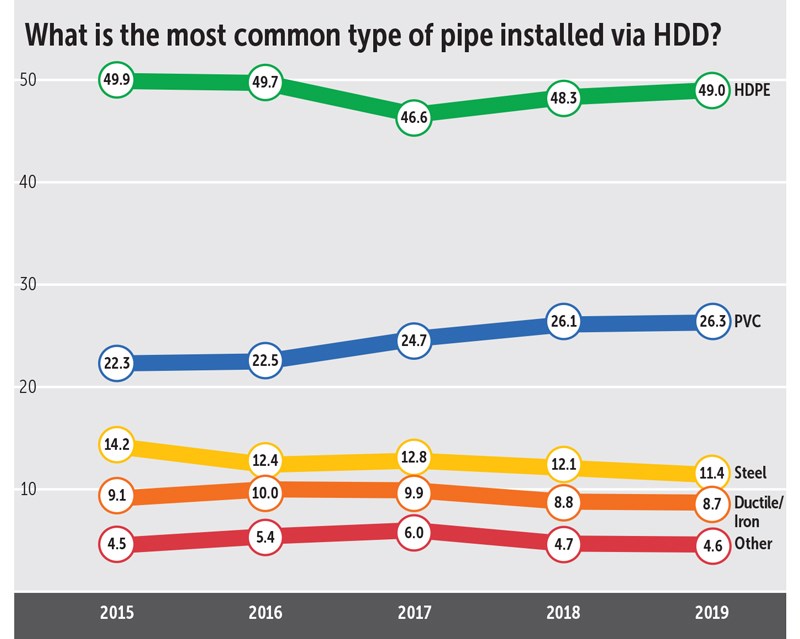
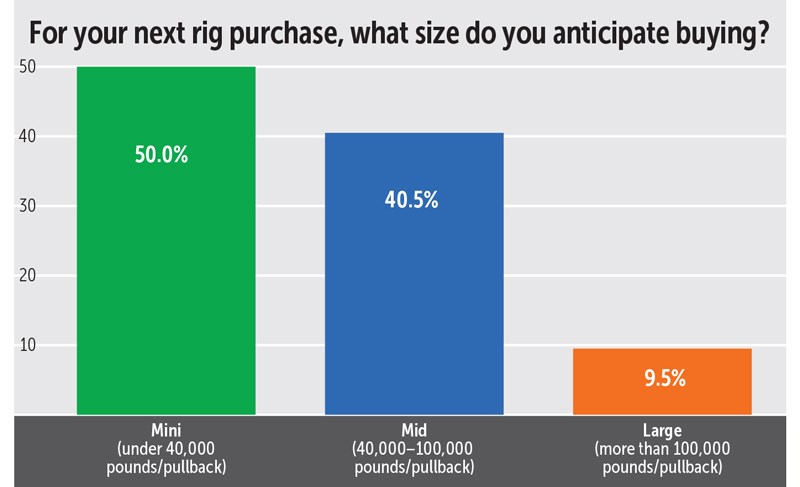
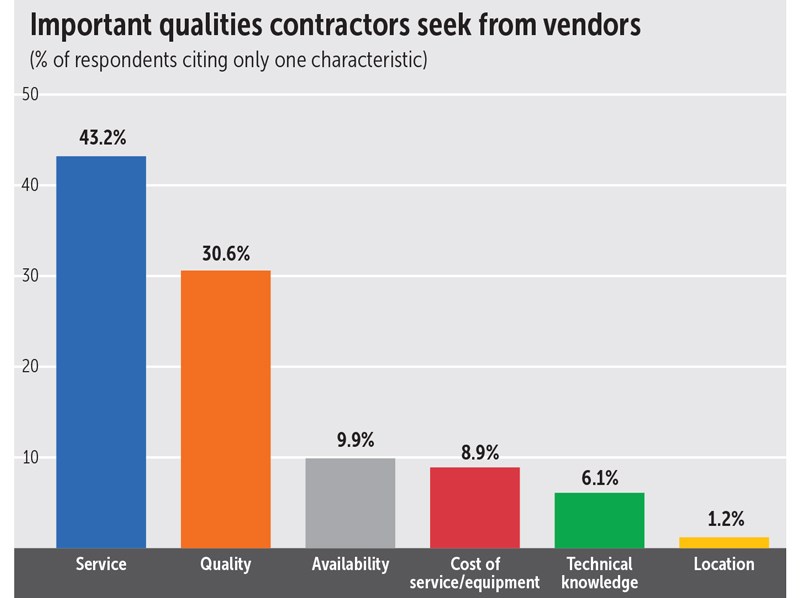
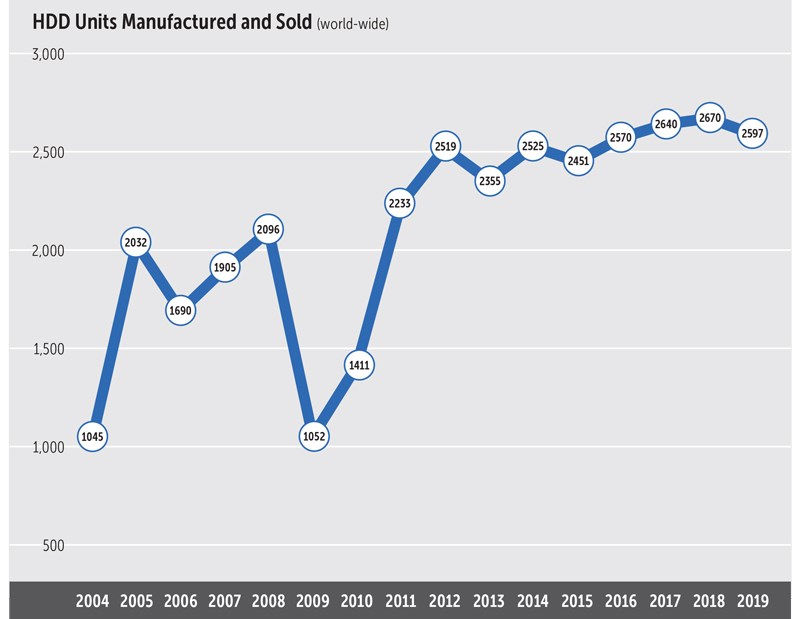

Comments